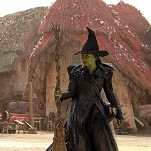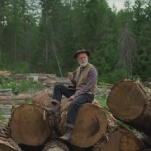Doctor Who: "The Hungry Earth"

[A quick note before we get started. Please do not post spoilers about episodes not yet aired in the U.S. in the comments. 1) I will delete them. 2) They make me and others watching the show as it unfolds on BBC America very, very sad. That is all.]
According to Wikipedia—which, of course, is never wrong—“The Hungry Earth” was the lowest rated episode of Doctor Who when it aired in Britain on May 22. It beat, if that’s the right word, a record previously held by “The Satan Pit.” So what should we take away from that? Maybe that casual Doctor Who fans tend to avoid episodes that involve holes in the ground? Will this be the last such episode? Doubtful. That would run contrary to the Doctor’s professed love of “big mining thing[s].” And, besides, those tuning out missed a pretty good episode, I thought.
Again, however, we run into the difficulty of talking about the first half of a two-parter, which isn’t always easy. It’s all set-up and no resolution. It’s an intriguing bit of set-up, however. We land in South Wales in the near-future of 2020, near enough to look a lot like the present but with more high-tech big mining things. It’s not, much to the Doctor’s chagrin, Rio. But it is a place where 10-years-older Amy and Rory can show up and wave at their former selves from a distance, a curious moment whose implications I can’t quite figure out.
It’s also a nearly abandoned place where a scientific skeleton crew studies minerals deep, deep in the Earth. How deep? Deep enough disturb a bunch of “homo reptilia” who feel threatened by the activity of the surface-dwelling “apes” who displaced them millennia ago. The Doctor recognizes them as Silurians, an old enemy making their first appearance in the rebooted series. They’ve got a bad attitude, a talent for kidnapping, and a surprisingly sophisticated ability not to crack under the pressure of interrogation for creatures who’ve been living under the surface for years. Then again, the final shots do reveal a whole Silurian society down there, so we’re not necessarily dealing with scaly, subterranean hillbillies.







































